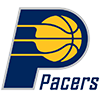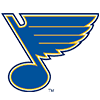This is part seven in a series of articles exploring the fantasy value of players in the 2014 NBA Draft. Each article in this series will focus on a different rookie. In this article, I'll take a look at the seventh overall pick, Julius Randle. Here are links to parts 1-6 of the series:
Part 1: Andrew Wiggins (and Introduction)
Part 2: Jabari Parker
Part 3: Joel Embiid
Part 4: Aaron Gordon
Part 5: Dante Exum
Part 6: Marcus Smart
The idea behind this series is that rookies have the potential to be valuable fantasy options, but also the potential to be disappointments. To understand the range of possible outcomes for these players, I've developed a reasonable best and worst-case scenario for each rookie based on the fantasy stats of comparable players. These comparable players either had similar college careers (as identified by www.hickory-high.com's similarity scores) or are commonly given in the media as comparisons for each rookie (e.g. Aaron Gordon is often compared to Shawn Marion).
This way, if you think Gordon will be the next Shawn Marion, you will know what that comparison looks like in terms of fantasy stats, as well as how valuable those stats are in a standard 10-team rotisserie league. Then, when fantasy draft day rolls around, you will know exactly how you want to value these rookie based on your own opinion of who they will be similar to in the NBA.
Julius Randle - Los Angeles Lakers (7th Pick)
Player Comparisons Considered:(Draft Year & Pick, Similarity Score)
Greg Monroe (2010 - 7, 860), Kevin Love (2008 - 5, 863), Sean May (2005 - 13, 848), David West (2003 - 18, 820), Nick Collison (2003 - 12, 851), Charlie Villanueva (2005 - 7, 883), Jared Sullinger (2012 - 21, 855), Zach Randolph (2001 - 19, N/A), Drew Gooden (2002 - 4, 882), J.J. Hickson (2008 - 19, 891), Jordan Hill (2009 - 8, 865), Al-Farouq Aminu (2010 - 8, 877), Cody Zeller (2013 - 4, 871), Wayne Simien (2005 - 29, 863), David Lee (2005 - 30, 864), Thomas Robinson (2012 - 5, 878)
Julius Randle began his college career being discussed as one of the most talented players in college basketball, in the same conversation as Andrew Wiggins and Jabari Parker. For a time, there was even some momentum for him to be the No. 1 overall pick in the 2014 draft. Randle had an outstanding freshman season and was given Third-Team All-American honors by the Associated Press. However, as the season progressed, questions arose about whether he actually had the potential to become a superstar at the next level. Randle was eventually chosen seventh overall by the Lakers in the 2014 NBA Draft.
From a fantasy perspective, there's a lot of early optimism surrounding Randle. The pro-Randle argument seems to go: While he doesn't have the potential to be a superstar like Wiggins or Parker, he should be able to score and rebound right away at a high level, which will be great for his fantasy value.
To understand whether the optimism surrounding Randle is warranted, let's first examine his potential level of playing time and then look at a best and worst-case scenario for his fantasy stats.
Minutes Per Game
To get a range of Randle's potential level of playing time as a rookie, I've put together a table showing all 18 post players selected in the past five drafts (2009-2013) who were picked in the top 10.
Player | TEAM | Year - PK | MPG |
Blake Griffin | LAC | 2009 - 1 | 38.0 |
Anthony Davis | NOH | 2012 - 1 | 28.8 |
DeMarcus Cousins | SAC | 2010 - 5 | 28.5 |
Greg Monroe | DET | 2010 - 7 | 27.8 |
Jonas Valanciunas | TOR | 2011 - 5 | 23.9 |
Tristan Thompson | CLE | 2011 - 4 | 23.7 |
Bismack Biyombo | CHA | 2011 - 7 | 23.1 |
Derrick Williams | MIN | 2011 - 2 | 21.5 |
Andre Drummond | DET | 2012 - 9 | 20.7 |
Derrick Favors | NJN/UTA | 2010 - 3 | 19.7 |
Jan Vesely | WAS | 2011 - 6 | 18.9 |
Ekpe Udoh | GSW | 2010 - 6 | 17.8 |
Cody Zeller | CHA | 2013 - 4 | 17.3 |
Thomas Robinson | SAC/HOU | 2012 - 5 | 15.1 |
Jordan Hill | NYK/HOU | 2009 - 8 | 13.3 |
Enes Kanter | UTA | 2011 - 3 | 13.2 |
Hasheem Thabeet | MEM | 2009 - 2 | 13.0 |
Alex Len | PHO | 2013 - 5 | 8.6 |
On a list that includes young stars like Anthony Davis, DeMarcus Cousins, and Andre Drummond, its surprising that only Blake Griffin averaged more than 29 mpg as a rookie, and it's probably unfair to compare Randle with Griffin.
Griffin went higher in the draft than Randle (No. 1 overall), and he also sat out his first season with the Clippers (knee), which allowed him additional time to prepare for his rookie season. Also, there's a chance that Griffin is not a human but a cyborg sent to earth with the sole purpose of being awesome at basketball.
If we use the Olympic judging method and remove the top and bottom player from the list above (Griffin and Len), the recent historical precedent for Randle's playing time would be in the range of 13 to 29 mpg, with a middle ground of about 21 mpg. This is below the level of the top rookie guards and wings, which indicates that Randle's fantasy value as a rookie has a lower ceiling than the other players in his rookie class.
Additionally, the Lakers frontcourt is suddenly crowded, as they have added or re-signed Jordan Hill, Ed Davis, Carlos Boozer, and Ryan Kelly this offseason. Randle is probably the most talented player among that group, so he should be given a chance to play right away. However, if he struggles, the Lakers clearly have other options. As a result, I've projected Randle to average 28 mpg, right in between Cousins and Monroe in the table above.
Best-Case Scenario: Zach Randolph (Draft: 2001; No. 19, Similarity Score: N/A)
Zach Randolph is a two-time All-Star with career averages of 17.4 ppg and 9.2 rpg in 13 seasons.The Lakers would probably be thrilled to get that type of production from the seventh overall pick.
At the same time, it's easy to see why Randolph is the most popular comparison for Randle. Both players are imposing forces who use strength and skill to score in the low post. Statistically, the two players were also very similar in college on a per-minute basis (courtesy of sports-reference.com):
Per 40 | MIN | FGA | FG% | FTA | FT% | 3PM | REB | AST | STL | BLK | PTS |
Zach Randolph | 19.8 | 14.4 | 59% | 7.7 | 64% | 0.0 | 13.5 | 2.1 | 1.5 | 1.3 | 21.8 |
Julius Randle | 30.8 | 12.0 | 50% | 9.4 | 71% | 0.1 | 13.5 | 1.8 | 0.6 | 1.0 | 19.4 |
Randolph and Randle both put up strong scoring (Randolph: 21.8 ppg, Randle: 19.4 ppg) and rebounding (both 13.5 rpg) numbers in college. Randolph was more efficient from the floor (59% FG vs. 50% FG), while Randle was more efficient from the line (71% FT vs. 64% FT). As has been well publicized, Randle had a notably low steal rate in college, much lower than Randolph (0.6 spg vs. 1.5 spg). There are people in the advance analytics community that believe this indicates Randle's game won't translate well to the NBA, which should at least be a red flag to fantasy owners.
Randolph was drafted 19th overall by the Portland Trail Blazers and was the third power forward on the team behind Rasheed Wallace and Shawn Kemp. As a result, he played only sparingly during his rookie season. However, his per-100-possessions stats as a rookie (courtesy of basketball-reference.com) are in line with his career averages and therefore should be an acceptable best-case scenario for Randle. If use those stats as a base and adjust them for the Lakers' expected pace of play and an average of 28 mpg, we get the following projection for Randle:
Player | MIN | FGA | FG% | FTA | FT% | 3PM | REB | AST | STL | BLK | PTS | Auction Value | Fantasy Rank |
Zach Randolph | 28.0 | 13.3 | 45% | 3.3 | 67% | 0.0 | 8.5 | 1.6 | 0.9 | 0.5 | 14.1 | $0 | 139 |
This projection would have ranked 139th overall last season. The scoring (14.1 ppg) and particularly rebounding (8.5 rpg) were both above replacement level, but the lack of production in the other categories caused this projection to rank just outside of the top 130.
Worst-Case Scenario: Thomas Robinson (Draft: 2012; No. 5, Similarity Score: 868)
Thomas Robinson's style of play is a little different than Randle's. Robinson relies more on his athleticism and less on his skill in the post. For example, check out this impressive block from last season:
Even though their style of play is a little different, from a statistical perspective, their production in college was very similar. Here's a comparison of their per-possession college stats (courtesy of draftexpress.com):
Per 40, Pace Adj | MIN | FGA | FG% | FTA | FT% | 3PM | REB | AST | STL | BLK | PTS |
Thomas Robinson | 31.8 | 16.4 | 50% | 7.6 | 68% | 0.2 | 14.7 | 2.3 | 1.3 | 1.1 | 21.9 |
Julius Randle | 30.8 | 12.0 | 50% | 9.4 | 71% | 0.1 | 13.5 | 1.8 | 0.6 | 1.0 | 19.4 |
Aside from Randle's aforementioned low steal rate, the college production of the two players was very similar, with Robinson just a tick better in rebounds (14.7 rpg vs. 13.5 rpg), assists (2.3 apg vs. 1.8 apg), and points (21.9 ppg vs. 19.4 ppg).
Adjusting Robinson's rookie-season stats for the Lakers' pace of play and an average of 28 mpg gives the following projection for Randle:
Player | MIN | FGA | FG% | FTA | FT% | 3PM | REB | AST | STL | BLK | PTS | Auction Value | Fantasy Rank |
Robinson | 28.0 | 8.5 | 43% | 2.9 | 52% | 0.0 | 8.3 | 1.2 | 1.1 | 0.7 | 8.8 | $0 | 199 |
This projection has fantasy value in the rebounding category (8.3) and is above replacement level in steals (1.1 spg) and blocks (0.7 bpg). However, it's far enough below replacement level in the other categories that it would have barely ranked inside the top 200 last season, irrelevant in standard leagues.
My Projection
To develop my own projection for Randle, I've used a statistical technique that basically evaluates where he ranked in college among his peers in a single category and then projects him to rank similarly in that category in the NBA. For example, if we look at scoring, Randle ranked near the bottom of the group I compared him with in college on a per-possession basis.
Therefore, my projection will have him ranked near the bottom of that same group in NBA scoring on a per-possession basis. Completing this calculation for all of Randle's fantasy categories produces the following projection, which again has been adjusted for the Lakers' pace of play and an average of 28 mpg.
Player | MIN | FGA | FG% | FTA | FT% | 3PM | REB | AST | STL | BLK | PTS | Auction Value | Fantasy Rank |
Julius Randle | 28.0 | 8.3 | 47% | 3.8 | 71% | 0.1 | 7.8 | 1.2 | 0.6 | 0.5 | 10.7 | $0 | 180 |
Randle projects to add fantasy value in the rebounding category (7.8 rpg), however this projection is below replacement level in every other category. As a result, this stat line would have ranked 180th last season, which would be a waiver wire player in standard leagues.
My Recommendation for Draft Day
When I started writing this series, I expected Randle to be one of the two or three most valuable rookies, but that is clearly not the case that's built by the numbers. In fact, I wouldn't even recommend taking a flyer on him in 10-team leagues. You may think the reason he ranks so low here is because of his projected level of playing time, but that really isn't the issue. Even if his projection is adjusted up to 38 mpg, which would adjust his projected points and rebounds to 14.3 ppg and 10.4 rpg respectively, he still wouldn't crack the top 100. It may seem strange that a player averaging a double-double would rank outside the fantasy top 100, but this would hardly be unique.
For years, Zach Randolph has been an elite rebounder, who also puts up strong scoring numbers. Last season, he averaged 17.4 ppg and 10.1 rpg. These are strong numbers in the two main categories for power forwards in fantasy, and so it's easy to assume that Randolph should rank as one of the top fantasy options at power forward. However, Randolph ranked 83rd overall last season, worth only $4 in fantasy auctions. If he is this good at the main power forward categories, why does he rank so low?
It turns out that players who do well in only two categories rarely produce a significant amount of fantasy value. For example, check out the table below, showing a comparison of Pau Gasol and Zach Randolph:
2013-14 Stats | FG% | FT% | 3PM | REB | AST | STL | BLK | PTS | Auction Value | Fantasy Rank |
Pau Gasol | 48% | 74% | 0.1 | 9.7 | 3.4 | 0.5 | 1.5 | 17.4 | $18 | 46 |
Zach Randolph | 47% | 74% | 0.0 | 10.1 | 2.5 | 0.7 | 0.3 | 17.4 | $4 | 83 |
Aside from blocked shots, these two players put up nearly identical stats last season. They both averaged 17.4 ppg and nearly 10 rpg. They both shot about 48 percent from the field and 74 percent from the line. Neither put up huge numbers in the three-pointers made, steals, or assists categories.
However, Gasol finished nearly 40 spots ahead of Randolph because he averaged 1.5 blocks, well above replacement level in that category. This gave him three strong categories compared with Randolph's two.
I've mentioned the concept of replacement level a few times in this article, so it's probably worth explaining briefly what I'm referring to before I go on.
Replacement level is a theoretical concept that is similar to WAR in baseball. The basic idea here is that if there are 130 roster spots in your league than the player with the 131th best average in rebounding would be designated as replacement level in rebounding. Below is a set of graphs that I've put together to show how Gasol and Randolph compare to replacement level in each fantasy category:


The orange bars in these graphs represent categories where these players rank above replacement level, and the white bars represent categories where these players rank below replacement level. In short, the orange bars represent fantasy value. For example, the replacement level production in the assists category is 2.8 apg. Gasol averaged 3.4 apg, so he added a small amount of fantasy value in this category. Randolph averaged 2.5 apg, so he actually had negative fantasy value in this category last season.
We can see more easily from these graphs that these players do produce fantasy value in the same categories (points and rebounds), except that a large portion of Gasol's fantasy value comes from his blocked shots, where he produced 2.5 times the replacement level (1.5 bpg vs. 0.6 bpg). Randolph has no third category where he adds fantasy value.
Randle currently projects to be a one-category fantasy producer. Even if he adds a second category (most likely points), he will still need to add a third category (FG%,blocks, etc.) to become a valuable fantasy option. I wouldn't expect to see that happen during his rookie season.
If you have thoughts about these projections that you'd like to discuss, or if you'd like me to calculate an alternative scenario, please leave a comment below or contact me on Twitter @MarcFRoberts.







































